
by Grow Up Conference | Nov 20, 2024 | Media Partners, Psychedelic News Wire
A recently released report has determined that psilocybin possesses the potential to help manage mental health conditions like anxiety and depression in the context of end-of-life care and severe illness.
The report was compiled by a task force in Vermont established earlier this year under S.114 by Governor Phil Scott. The eight-person group was tasked with reviewing studies and evidence of public health risks and benefits of clinical psychedelic-assisted therapy and giving recommendations on how and whether the state of Vermont should regulate legal access to psychedelics like MDMA and psilocybin.
This is in addition to assessing the programs and laws of other states which have permitted psychedelic use in a therapeutic setting by healthcare providers.
The task force’s representative and co-founder of the Psychedelic Society of Vermont, Rick Barnett, alerted the public about the report’s release on social media. In their report, the investigators recommended that harm reduction training and education for the public as well as health practitioners be increased.
This comes as the use of psychedelics for both recreational and therapeutic purposes continues to grow. The group posits that increasing harm reduction training may lower risks for those that choose to use psychedelics outside of a regulated system.
They also recommended that legislators facilitate the ability to study psychedelic treatments in Vermont and add monitoring the evolution of programs and research across the country to the task force’s responsibilities.
Regarding major reforms, the report highlights that the working group had a hard time deciding what model needed to be implemented in the state. The options included facilitated-use models for therapeutic psychedelics, which have been adopted by Colorado and Oregon; and a decriminalization model paired with public education, safety and health initiatives.
The investigators explained that insufficient data from current programs made it difficult to inform the impact of legalizing the therapeutic use of psychedelic drugs on public health.
The task force’s report was met with mixed reactions, especially since the objective of the bill behind it was to legalize the possession and use of psilocybin. This section of the legislation was eliminated, with the focus being placed on the working group.
Some amendments also saw the legislation lose a provision that would’ve given individuals with lived experience the opportunity to give their testimonies on the drugs. The legislation’s sponsor Senator Martine Larocque Gulick stated at the time that she was disappointed that the conversation on decriminalization was eliminated from the bill.
As these efforts to reform psychedelic laws register mixed results, the approach taken by enterprises like atai Life Sciences N.V. (NASDAQ: ATAI) to develop approved medications could be a surer way to get these substances in the mainstream.
About PsychedelicNewsWire
PsychedelicNewsWire (“PNW”) is a specialized communications platform with a focus on all aspects of psychedelics and the latest developments and advances in the psychedelics sector. It is one of 60+ brands within the Dynamic Brand Portfolio @ IBN that delivers: (1) access to a vast network of wire solutions via InvestorWire to efficiently and effectively reach a myriad of target markets, demographics and diverse industries; (2) article and editorial syndication to 5,000+ outlets; (3) enhanced press release enhancement to ensure maximum impact; (4) social media distribution via IBN to millions of social media followers; and (5) a full array of tailored corporate communications solutions. With broad reach and a seasoned team of contributing journalists and writers, PNW is uniquely positioned to best serve private and public companies that want to reach a wide audience of investors, influencers, consumers, journalists and the general public. By cutting through the overload of information in today’s market, PNW brings its clients unparalleled recognition and brand awareness. PNW is where breaking news, insightful content and actionable information converge.
To receive SMS alerts from PsychedelicNewsWire, text “Groovy” to 888-902-4192 (U.S. Mobile Phones Only)
For more information, please visit https://www.PsychedelicNewsWire.com
Please see full terms of use and disclaimers on the PsychedelicNewsWire website applicable to all content provided by PNW, wherever published or re-published: https://www.PsychedelicNewsWire.com/Disclaimer
PsychedelicNewsWire
San Francisco, CA
www.PsychedelicNewsWire.com
415.949.5050 Office
Editor@PsychedelicNewsWire.com
PsychedelicNewsWire is powered by IBN

by Grow Up Conference | Nov 20, 2024 | Grow Opportunity, Media Partners
(CNW) Edmonton – Aurora Cannabis Inc., the Canadian-based leading global medical cannabis company, is excited to announce its latest lineup of innovations from Greybeard, San Rafael ’71 and Tasty’s brands. With a continued focus on premium, science-driven offerings, this expanded lineup represents Aurora’s commitment to delivering exceptional high quality, cutting-edge and diverse options for Canadian cannabis consumers.
“As one of the largest Canadian cannabis companies, we take great care in listening to our consumers and responding with a portfolio of products that deliver on what cannabis consumers are seeking – flavour and intensity,” said Geoff Hoover, Senior Vice President, Consumer at Aurora. “Backed by world class capability in science and superior cultivation, we’re proud to expand our cannabis offering for the adult consumer that is on the lookout for brands they can trust time and again – which is exactly what we strive for at Aurora.”
Aurora boasts a leading portfolio of brands that Canadians know and love, including Greybeard, San Rafael ’71 and Tasty’s. Following Tasty’s inaugural year in the Canadian adult market, the brand leaned into valuable consumer insights to develop. The new offerings reinforce Tasty’s commitment to quality, creativity, and an unforgettable cannabis experience.
The latest products available across Canada include the following:
- Greybeard | Banana Gas Pure Live Resin Vape, awakens senses with authentic notes of gassy bananas on the inhale and a savoury, umami finish on the exhale.
- Greybeard | Country Lemon Terp Slush (1g); live resin extract featuring a bright, golden hue and a smooth, sugary texture.
- Greybeard | Critical Diesel Pre-Rolls (3 x 0.5g); crafted from 100% whole milled bud, not trim, these pre-rolls are an effortless way to experience Greybeard’s latest craft sativa – known for its unique blend of cherry, grape, strawberry, vanilla and gas aromas.
- San Rafael ’71 | 20 Pack Pre-Rolls (20 x 0.5g); made in response to the growing demand for bulk pre-roll options; perfect for those who appreciate consistency and value.
- Tasty’s | Mango Diamond Infused Pre-Rolls, Indica (3 x 0.5g), infused with ultra-powerful THC-A diamonds, with a burst of tangy, sun-kissed mango flavours enhanced by botanical terpenes.
- Tasty’s | Honeydew Diamond Infused Pre-Rolls, Sativa (3 x 0.5g), infused with THC-A diamonds, with ripe, refreshing honeydew flavour.
- Tasty’s | Melon Diamond Infused Pre-Rolls, Sativa (3 x 0.5g), created with THC-A diamonds and refreshing sweet melon flavours.
- Tasty’s | Grape 510 Vape (1.2g), offers an unbeatable combination of taste and 1000mg of THC to deliver a tongue-tickling sweetness with subtle tanginess.
Aurora’s industry-leading portfolio of cannabis products are made available nationwide for cannabis retailers to offer
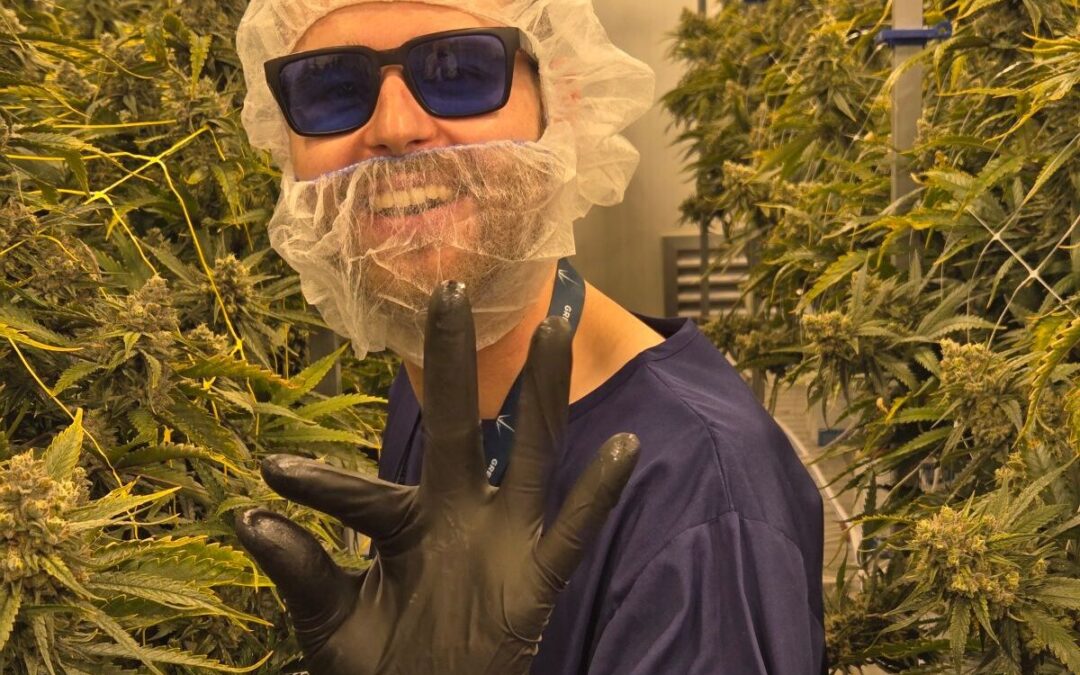
by Grow Up Conference | Nov 20, 2024 | Grow Opportunity, Media Partners
Scaling a cannabis operation is no small feat. And having worked across various facilities and phases of scaling, I’ve learned that success comes down to a few things: meticulous planning, the right team, and a deep understanding of market demands.
Since beginning my career in cannabis, here’s what I’ve learned about scaling an indoor cannabis operation effectively.
Build a solid foundation
Before scaling, you need to establish a strong foundation – meaning dialing in all processes and procedures at your current scale. This is your proof of concept stage. Whether it’s lighting, nutrients or genetics, everything should be optimized and running smoothly.
For example, if you decide to test new nutrient lines or grow mediums mid-scale, you’re setting yourself up for inconsistencies and potential failures because introducing new variables while scaling will almost always creates chaos.
In Quebec’s regulated market where quality is paramount, maintaining consistency is critical. Customers expect reliable products, and any deviation can harm your brand. Therefore, ensure your current operation can replicate the desired quality at a larger scale before expanding.
Secure the right team for the job
Scaling isn’t just about increasing square footage – it’s about growing your team strategically. Your core team from the first facility should be your ride or die group. Without the right people in place, scaling can quickly lead to quality control issues and operational inefficiencies.
Training is another key pillar. As you scale, you’ll likely need to bring on new hires. Your core team should be prepared to train these new employees effectively, which ensures that your company’s values and quality standards are upheld as the operation grows.
Scale driven by demand
One of the most common mistakes I’ve seen in the industry is scaling without a clear demand for the product. In the early days of legalization, many expanded rapidly, focusing on increasing square footage rather than understanding market needs, often leading to unsold inventory and financial strain.
Scaling should always be driven by actual market demand. If your product consistently sells out, that’s a clear indicator you’re ready to scale.
Launching new products or strains requires careful consideration, so conduct in-house trials and gather feedback from a sample group of consumers to ensure the product meets market expectations before ramping up production.
Phase 1 and Phase 2
In Phase 1 of scaling, focus on perfecting your processes and establishing a steady production flow. Once you’re confident in your operation, move to Phase 2, where you increase capacity while maintaining quality.
For instance, at a facility I worked at, we scaled from 3,700 square feet of canopy to 35,000 square feet within a year and it was successful because we had solid procedures and a trained team in place.
Environmental responsibility
Scaling also presents opportunities to adopt more environmentally friendly practices. Larger operations can often afford technologies like composting root balls or reusing grow mediums, which may be cost-prohibitive for smaller facilities. At one facility, we partnered with a composting company to recycle root balls, reducing waste and aligning with more sustainable practices.
Overall, scaling indoor cannabis production requires a balance of precision, planning and adaptability. By focusing on a solid foundation, building a strong team, and scaling based on market demand, license holders can navigate the complexities of this growing industry.
Remember, it’s not just about getting bigger – it’s about getting better while staying true to the values that define your operation.
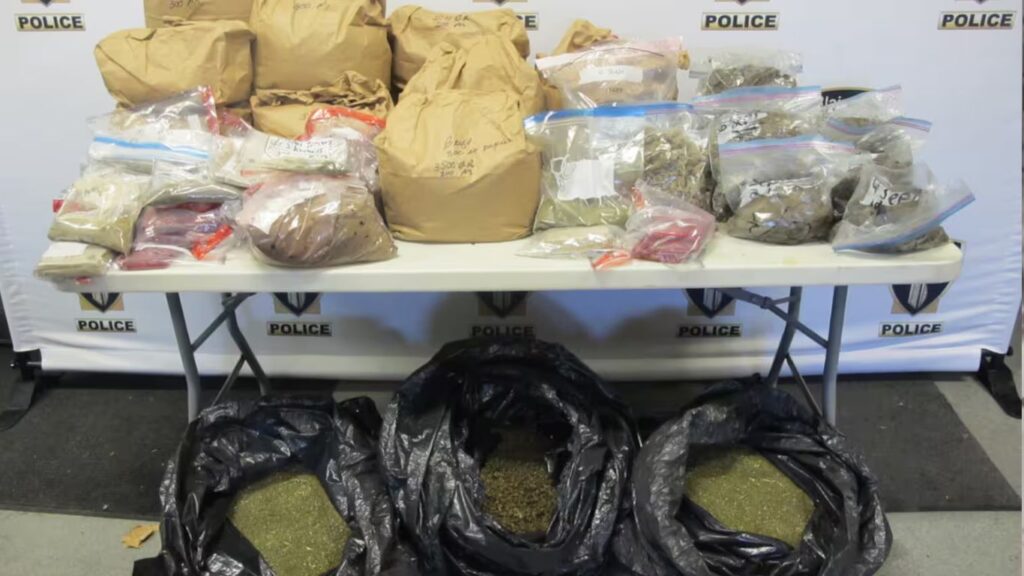
by Grow Up Conference | Nov 19, 2024 | Media Partners, Stratcann
Police in Blainville, Quebec say they seized more than 32 kg of cannabis, 37 kg of hashish, and 57 kg of kief, along with hash-making equipment in a raid earlier this month, arresting three.
Police say this is the largest seizure of hashish in the department’s history. The three arrested men are in their 40s and 60s.
The raid was the result of an investigation that began several months ago as part of the province’s ACCES program, a concerted action against the underground economy.
The ACCES Cannabis program (Actions Concertées pour Contrer les Économies Souterraines) is a provincial initiative set up in 2018 by the Ministry of Public Security to combat illicit cannabis operations.
Earlier this month, police in Quebec arrested six and seized a large quantity of cannabis in connection with what they say was a hash processing facility. That raid led to six arrests and a large quantity of seized cannabis following a series of seven searches of places and five vehicles in Shawinigan, Montreal, and Saint-Armand.
Related Articles

by Grow Up Conference | Nov 19, 2024 | Media Partners, Stratcann
A cannabis retailer in Ontario will have to pay a $100,000 fine for pursuing and accepting prohibited payments from licensed cannabis producers.
The decision, posted by the Alcohol and Gaming Commission of Ontario (AGCO) on November 19, comes following the issuance of an administrative penalty to Cannabis Xpress in April 2024 of $200,000.
The cannabis retailer, which operates 14 locations in Ontario and three in New Brunswick, had appealed that decision. Cannabis Xpress has now withdrawn its appeal, says the AGCO, with the retailer admitting that some of the “data agreement” effectively induced it to purchase the relevant products from Canadian cannabis producers.
The provincial regulatory agency began investigating after receiving information about possible “inducement activity.” The AGCO investigated Cannabis Xpress, including a review of over 82,000 relevant documents. The agency found that Cannabis Xpress’ “Data Services Program” and/or other agreements with licensed cannabis producers are actually an inducement program.
“Ontario’s anti-inducement rules exist to protect small businesses and consumers from predatory ‘pay to play’ schemes,” said Dr. Karin Schnarr, registrar and CEO of AGCO. “The AGCO will continue to monitor business arrangements between licensed retailers and producers and will take strong action against any licensee found to be engaging in illegal behaviour.”
A representative from Cannabis Xpress was not immediately available for comment.
The AGCO says that between January 2021 and July 2023, Cannabis Xpress entered into agreements or arrangements with at least 61 LPs, the majority of which were referred to as “Data Sharing Agreements” or “Data Agreements”. Data on cannabis sales, especially from larger chains with numerous locations, can be valuable to producers, allowing them to better understand what products are selling well and where.
So-called “data deals” have been controversial in the industry for some time, with some Ontario retailers calling out the practice last year. Provincial rules do allow retailers to sell data to producers. The OCS began sharing similar information earlier this year in a move that some hope would address these market demands.
Although Cannabis Xpress’ agreements appeared, on the surface, to be related to the sale of such sales data, the AGCO says that the fees to be paid under some of the agreements were based on the number of Stock Keeping Units (SKUs) to be carried at Cannabis Xpress stores.
Cannabis Xpress’ communications with cannabis producers, continues the AGCO, implied that these companies could expect to enhance sales volumes in their stores by entering into these “data deals”.
According to the AGCO, the company represented to the cannabis producers that: “our goal is to have long-term relationships with a limited number of suppliers, and pump as much volume as we can out of the stores.”
An email shared with StratCann from Cannabis Xpress by a cannabis producer confirms the same language, which also stated that the fee for the data depends on a few factors, such as the product category and total number of SKUs.
The AGCO also alleges that some Canadian cannabis companies (LPs) were told that the retailer was not willing to purchase their cannabis products without entering into a data agreement. Other cannabis companies that tried to renegotiate, terminate or alter the terms of their data agreements with Cannabis Xpress say they saw the purchase of their cannabis products decline in volume and frequency.
Cannabis Xpress retail staff were also allegedly informed that, before they stocked new products, they were to confirm whether the LP had a data agreement in place.
Cannabis Xpress retail staff were also said to have been told not to “mention deals of any sort to customers or brand reps we don’t have a deal with” and “[i]f someone asks why we don’t stock a certain brand, just politely say we have the maximum amount of SKUs we’re able to get at the moment, or something along those lines.”
Some publicly traded cannabis companies report sales of their own data programs. Ontario’s rules allow retailers to sell data to producers, allowing them to better understand product sales trends.
Nova Cannabis, a company behind one of Canada’s largest chain of cannabis stores, Value Buds, recently reported revenue from its own “proprietary data licensing arrangements” of $12.4 million for 2023, an increase of 125% from $5.5 million in 2022.
High Tide, another sizeable retail cannabis business in Canada with more than 150 Canna Cabana locations across the country, reported sales from its own “Cabanalytics business data and insights platform” increased to $6.5 million in the third fiscal quarter of 2023 from $5.5 million during the same period in 2022.
Related Articles

by Grow Up Conference | Nov 19, 2024 | Media Partners, Stratcann
Investigators from the Calgary Police Service Robbery Unit are asking for the public’s help, after exhausting other leads, to identify a man they say is believed to be responsible for robbing several cannabis stores while wearing a disguise in Calgary and Edmonton.
In an announcement on November 19, Calgary Police described an armed robbery at Lux Leaf Cannabis, located in Calgary at 7171 80 Ave. NE. The suspect is said to have entered the store just before it closed at 11pm on Sunday, September 1, 2024. The suspect demanded cannabis products from store employees and then fled on foot with several items.
Police say the suspect is believed to have committed several other cannabis store robberies in Calgary in September and October, entering the store just before closing time and demanding products. Calgary investigators say it is believed the suspect committed several similar robberies in Edmonton.
It is believed the suspect was in possession of a firearm during most of the robberies.
The suspect is described as a man aged 25 to 35, between 5’6” and 5’10” tall, with a medium build. He disguises himself by wearing fake beards, moustaches, baseball hats, and sunglasses.
Anyone with information about these incidents, or who knows the suspect’s identity, is asked to call the Calgary Police Service non-emergency line at 403-266-1234 or the Edmonton Police Service non-emergency line at 780-423-4567.
On November 14, Calgary Police said they had found and charged a man involved in several cannabis store robberies in recent months in the city.
Police arrested the man in the early hours of Tuesday, October 15, 2024, shortly after he had robbed a Circle K convenience store with a firearm at 1919 Sirocco Dr. SW. Once he was arrested, police discovered he was the same man believed to be connected with a series of seven cannabis store and liquor robberies this past summer.
Calgary Police released details about the suspect in September, asking for help from the public in identifying the man, who often wore different outfits or disguises.
In an announcement on November 6, the Edmonton Police Service (EPS) is also seeking the public’s assistance in locating two suspects they say are responsible for robbing a cannabis store in South Edmonton.
In October, EPS made a similar request for help from the public, identifying a man in a fake beard robbing cannabis stores who appears to be the same man Calgary Police are now seeking. In June, EPS said they were looking for two other suspects in a cannabis store robbery.
Cannabis stores in Canada continue to be targets for robbers and burglars. In March, a man in Toronto was arrested following several cannabis store robberies. In December 2023, police in Calgary identified suspects in a string of cannabis store robberies.
Robberies and burglaries are not exclusive to cannabis stores. Two cannabis producers in BC were robbed in early-morning heists in 2023, as well.

by Grow Up Conference | Nov 19, 2024 | Cannabis News Wire, Media Partners
Public use would remain off-limits, ensuring that cannabis consumption is kept private and not visible in open areas. The measure specifically avoids creating a commercial cannabis market, unlike the recent ballot efforts in other states that sought to legalize the production and sale of marijuana.
Joe Evans, treasurer for Kind Idaho, highlighted this distinction in a statement back in September when the group first submitted the measure. He noted that the group’s approach is based on the belief that people should be allowed to manage their health and well-being privately, without interference from the state, as long as they’re acting responsibly.
Evans also mentioned that the straightforwardness of the measure might make it more appealing to Idaho voters as it does not include provisions for a state-managed medical cannabis program, which has been part of prior legalization efforts.
Kind Idaho has revised the proposal’s language following feedback from state officials, including the Idaho secretary of state and attorney general. The measure, titled “Decriminalize Marijuana Now,” has now entered the next phase of the state approval process.
The attorney general’s office has 10 days to finalize the ballot title and draft a summary for voters. Once this step is complete, Kind Idaho plans to start gathering signatures to place the measure on the 2026 ballot.
To qualify for the ballot, Kind Idaho needs to collect around 70,000 signatures from registered Idaho voters. This includes gathering support from at least 6% of voters across at least 18 of the state’s thirty-five legislative districts. The group has until April 2026 to submit these petitions for the proposal to be officially added to the ballot.
The decision to push for a more limited legalization measure in Idaho aligns with recent trends in cannabis legislation, particularly following the failure of broader legalization efforts in other states. In the 2024 election, similar ballot measures in North Dakota and Florida were rejected by voters. South Dakota also saw a failed attempt to legalize cannabis possession without authorizing commercial sales.
As the legalization movement spreads to more states across the U.S. and reforms are enacted, numerous business opportunities are likely to be opened up, such as those that take their inspiration from the operations of entities like Innovative Industrial Properties Inc. (NYSE: IIPR).
About CNW420
CNW420 spotlights the latest developments in the rapidly evolving cannabis industry through the release of an article each business day at 4:20 p.m. Eastern – a tribute to the time synonymous with cannabis culture. The concise, informative content serves as a gateway for investors interested in the legalized cannabis sector and provides updates on how regulatory developments may impact financial markets. If marijuana and the burgeoning industry surrounding it are on your radar, CNW420 is for you! Check back daily to stay up-to-date on the latest milestones in the fast -changing world of cannabis.
To receive SMS alerts from CNW, text CANNABIS to 888-902-4192 (U.S. Mobile Phones Only)
For more information, please visit https://www.CannabisNewsWire.com
Please see full terms of use and disclaimers on the CannabisNewsWire website applicable to all content provided by CNW, wherever published or re-published: https://www.CannabisNewsWire.com/Disclaimer
CannabisNewsWire
Denver, CO
www.CannabisNewsWire.com
303.498.7722 Office
Editor@CannabisNewsWire.com
CannabisNewsWire is powered by IBN
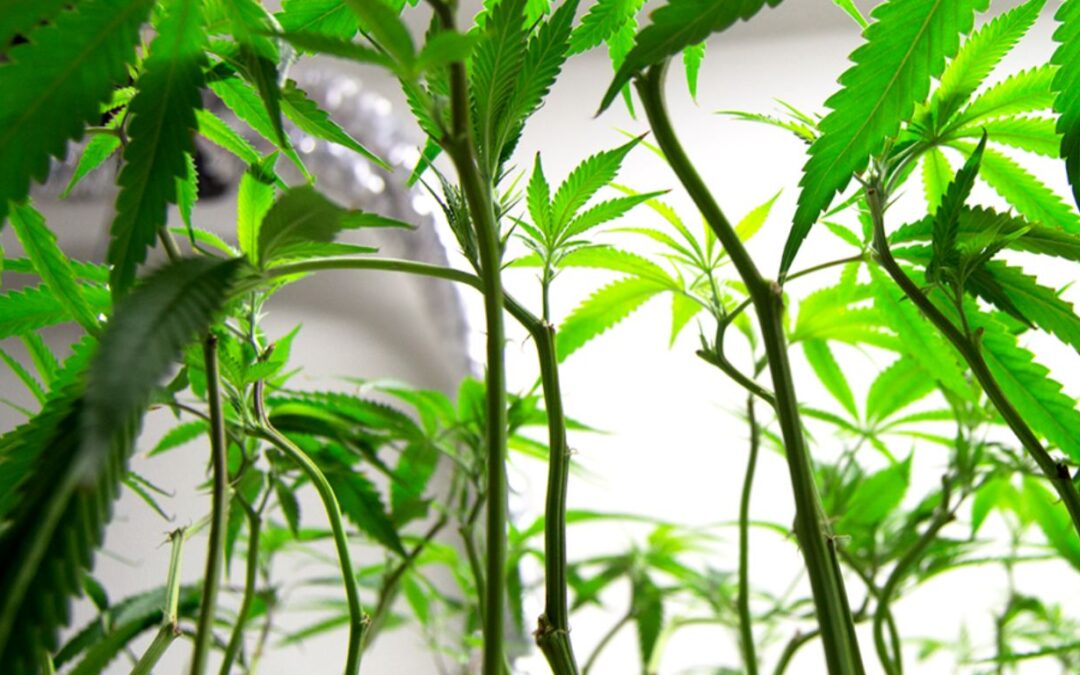
by Grow Up Conference | Nov 19, 2024 | Media Partners, Stratcann
Following filing for creditor protection earlier this month, Noya Holdings Inc. and Noya Cannabis Inc. are seeking approval of a stalking horse deal for approximately $3.8 million from an unnamed company.
The company is also seeking an order extending the stay of proceedings to and including March 7, 2025.
Filed on behalf of Noya on November 12, the document states that the stalking horse purchaser may be a related party to the company. A stalking horse bid is a bid on a bankrupt company’s assets and is the first bid offered to a bankrupt company before a public auction takes place.
Noya filed for creditor protection after its senior secured creditor, Lending Stream Inc., demanded payment and issued BIA notices regarding these debts in September. The owner of Lending Stream is the brother of the owner of the Applicants.
Another secured creditor that provided loans to NHI 1955185 Ontario Inc. is another secured creditor. As of September 30, 2024, 195 had loaned approximately $3.8 million to NHI, the approximate dollar figure associated with the proposed stalking horse deal. The numbered company is owned or controlled by the parents or relatives of the owner of the applicants.
A stalking horse agreement is usually structured as a purchase of the company’s retained assets by way of a share sale and “reverse” vesting approval order.
The proposed timeline of the stalking horse sales process is a notice of sales process published on December 6, 2024, finalizing the schedule of assumed liabilities in the stalking horse agreement by December 31, 2024, with a bid deadline of January 27, 2025, an auction on Wednesday, February 5, 2025, and a hearing of the ale approval motion no later than February 14, 2024
Noya also seeks $400,000 to be made available through a DIP loan for the company’s operation throughout the sale process. The company argues that without the loan, it will be unable to continue to operate or complete the sale.
Noya Holdings Inc. (NHI) and Noya Cannabis Inc. have applied for creditor protection in an initial order posted on November 6, 2024. Noya’s monitor in the case is BDO Canada Limited.
NHI is the holding company, and through its wholly-owned subsidiary, NCI, it operates a cannabis manufacturing and production business. The affidavit of Noya CEO Zaid Reda says the company’s business has focussed primarily on being a wholesale business-to-business service or product provider over time. The company is insolvent and faces liquidity challenges. A motion record for the company says the primary value of Noya is “dependent on a few, key, large customers and derived from its ability to seamlessly and continuously fulfill the order requirements of these key customers.”
If it is unable to continue operations, it could lose these key wholesale customers.
NCI currently employs 18 employees. The unnamed stalking horse purchaser is expected to maintain the employment of “substantially all” of the employees.
NCI blames its current position on “lower than expected demand, oversupply and downward price pressure in domestic markets.” as well as the ongoing illegal cannabis market which it says has impacted demand for legal products.
NCI’s federal cannabis production licence from Health Canada is currently scheduled to expire on December 21, 2028.

by Grow Up Conference | Nov 19, 2024 | Garden Culture Magazine, Media Partners
It’s almost impossible to imagine that the plants I choose today for my garden could be alive 100 years from now. Well, it’s true; a sustainable, low-maintenance perennial garden that can thrive for a century only requires making the right choices in what you choose to plant now!
Slow Growth Rate
Short-lived perennials grow in the garden between three to ten years. Long-lived perennials, however, outlive their friends by 10 to 40 years or longer – some thriving for a century or more!
These plants take a while to get going. There is very little growth above ground in their first year of planting. But below the surface, they’re busy developing roots. In their second season, they work on foliage. By the time the third growing season rolls around, all the waiting and patience pays off, and they are putting on a show that will continue for decades.
Perennial Benefits
Since these perennials live in the same spot for decades, their root systems anchor the soil, reducing erosion and improving overall moisture retention. These stalwarts will enhance your garden for decades, reducing the money you spend each year on other plants and the maintenance you need to do to keep the garden colorful and bright.
Caring for Old Perennials
As organic matter, such as leaves and spent flowers, accumulate in the soil around the plants, an ongoing food source for the microbial life below the soil surface is created, enhancing the plant’s health. Fertilizing a mature perennial, even with organic fertilizer, may upset the balance it has found in the soil by itself. Mulching the soil with leaves in the winter and organic compost is the best thing you can do for the plant. Keeping it shaped and pruned according to the plant’s needs is all they need. How easy is that?
My Five Favs Perennials to Plant
Peonies
Better Homes and Gardens reports that peonies planted in their test garden in the 1950s are still blooming in the 21st century. Growing to 3 feet tall, peonies are hardy to zone 3 and love full sun to part shade.


Hostas
Reaching maturity between five and eight years, they can live for 30 or more years in the ground or containers and are perfect for the shade garden.
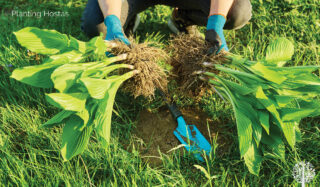

Clematis
It is no secret that I love clematis. The fact that they can live for up to 50 years only increases the love affair. Preferring shaded cool roots – many clematis are hardy to zone 3 and can grow up to 10 feet tall.


Wisteria
Speaking of vines, there is something romantic and everlasting about the purple flowers and knotting wood of a wisteria vine. Full-sun Chinese wisteria (Wisteria sinensis) will live up to a century.


Hydrangea
They live up to two to five decades and add long-lasting summer color to the garden. Many hydrangeas are hardy to Zone 5 or lower and thrive in full sun to part shade.


Other popular choices for longevity in the garden include daylilies or irises. One California poppy in my garden started a chain reaction that, for over a decade, has kept producing generations of offspring, adding to the garden’s overall longevity.

by Grow Up Conference | Nov 19, 2024 | Grow Opportunity, Media Partners
(Globe Newswire) Toronto – Cannabis Xpress, a licensed operator of 14 cannabis retail stores in Ontario, will pay a penalty of $100,000 for pursuing and accepting prohibited payments from licensed cannabis producers (LPs).
Ontario’s cannabis rules bar cannabis retailers from demanding payments from LPs as a condition of securing product orders or giving preferential treatment to products in their stores. The rules exist to protect consumers and ensure a level playing field in the legal cannabis industry.
The regulatory breaches were discovered following a comprehensive compliance assessment by the Alcohol and Gaming Commission of Ontario (AGCO), which included an exhaustive review of over 82,000 documents.
The review concluded that:
- Between January 2021 and July 2023, Cannabis Xpress entered into agreements or arrangements with at least 61 LPs, the majority of which were referred to as “Data Sharing Agreements” or “Data Agreements”.
- While the agreements were ostensibly related to the sale of data, the fees to be paid under some of the agreements were, in fact, based on the number of Stock Keeping Units (SKUs) to be carried at Cannabis Xpress stores.
- Cannabis Xpress’ representations to LPs implied that, by entering so-called data agreements, they could expect to enhance sales volumes due to limited resulting competition by other LPs’ product lines in its 14 Ontario retail stores. Cannabis Xpress represented to LPs that: “our goal is to have long-term relationships with a limited number of suppliers, and pump as much volume as we can out of the stores.”
- Certain LPs were told that Cannabis Xpress was not willing to purchase their cannabis products without entering into a data agreement. Other LPs that sought to renegotiate, terminate or alter the terms of data agreements saw the purchase of their cannabis products decline in volume and frequency.
- Cannabis Xpress retail staff were informed that, before they stocked new products, they were to confirm whether the LP had a data agreement in place.
- Cannabis Xpress retail staff were also informed to not “mention deals of any sort to customers or brand reps we don’t have a deal with” and “[i]f someone asks why we don’t stock a certain brand, just politely say we have the maximum amount of SKUs we’re able to get at the moment, or something along those lines.”
Following the review, the AGCO issued an Order of Monetary Penalty to Cannabis Xpress, which they subsequently appealed.
Cannabis Xpress has withdrawn its appeal, acknowledging that certain of the data agreements effectively induced the company to purchase the relevant LPs’ products. Further, Cannabis Xpress has confirmed that it does not contest accepting payments contrary to the anti-inducement provisions of the Registrar’s Standards for Cannabis Retail Stores.
QUOTE
“Ontario’s anti-inducement rules exist to protect small businesses and consumers from predatory ‘pay to play’ schemes. The AGCO will continue to monitor business arrangements between licensed retailers and producers and will take strong action against any licensee found to be engaging in illegal behaviour.”
Dr. Karin Schnarr
Registrar and Chief Executive Officer, AGCO














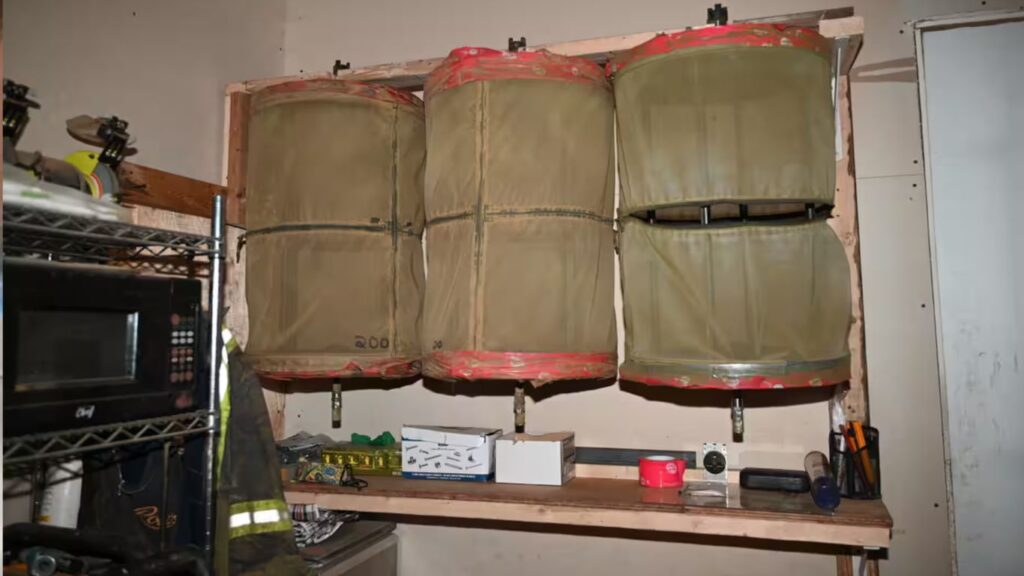







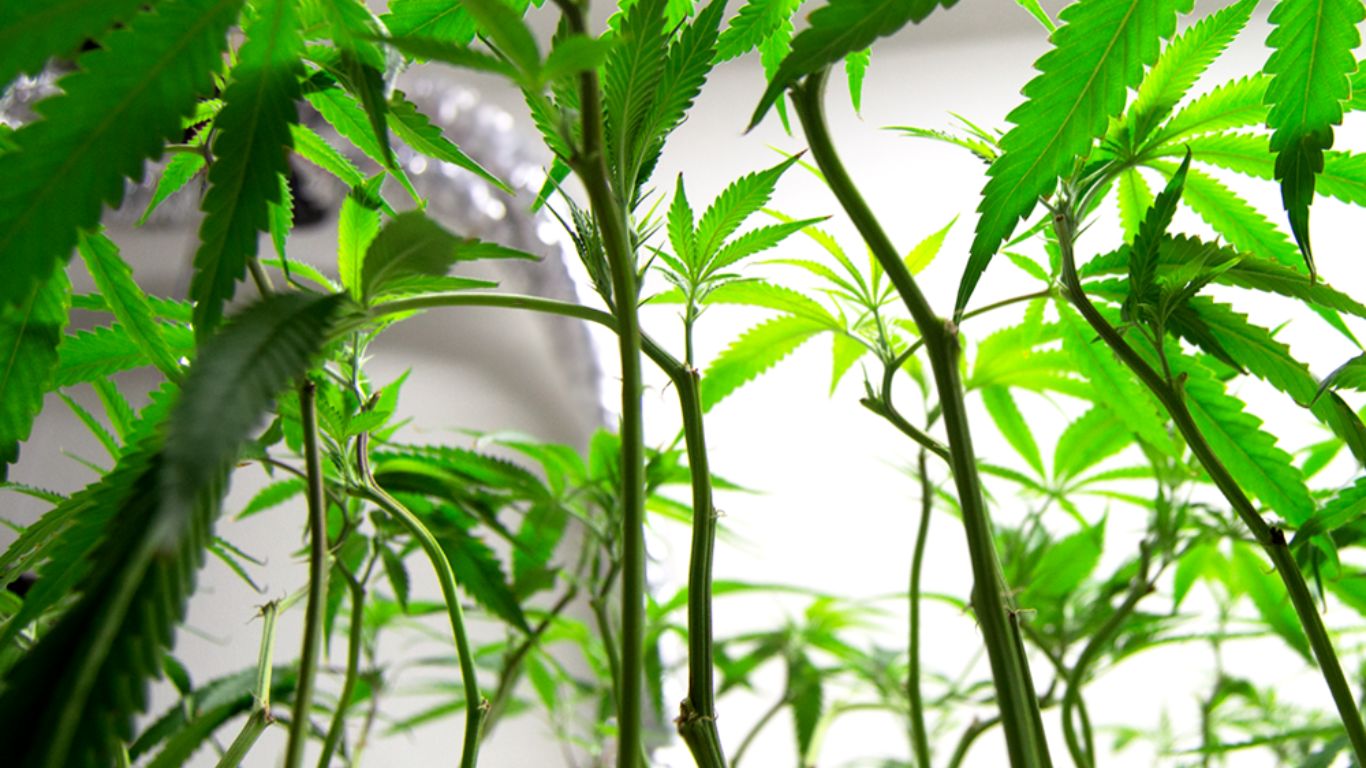
Recent Comments